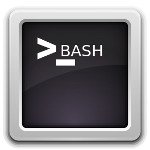-
PostgreSQL

PostgreSQL: Database Creation and Data Population
This article is part of our Academy Course titled PostgreSQL Database Tutorial. In this course, we provide a compilation of…
Read More » -
PostgreSQL

PostgreSQL indexes example
This article is part of our Academy Course titled PostgreSQL Database Tutorial. In this course, we provide a compilation of…
Read More » -
PostgreSQL

PostgreSQL VACUUM Command Example
This article is part of our Academy Course titled PostgreSQL Database Tutorial. In this course, we provide a compilation of…
Read More » -
BASH

Linux Screen Command Tutorial
Screen is a window manager that allows to have several virtual terminals, several sessions and programs in text mode executing…
Read More » -
PostgreSQL

PostgreSQL commands and datatypes
This article is part of our Academy Course titled PostgreSQL Database Tutorial. In this course, we provide a compilation of…
Read More » -
BASH

Linux Create User Example
This example will show you how to create users in Linux, looking at the two different available commands: the default…
Read More » -
PostgreSQL

PostgreSQL: Introduction and installation tutorial
This article is part of our Academy Course titled PostgreSQL Database Tutorial. In this course, we provide a compilation of…
Read More » -
BASH

Formatting and coloring the cURL output
When it comes to documenting the APIs (especially the REST ones), having the cURL samples that one can try out…
Read More »



